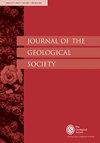A tectonostratigraphic framework for the late Mesoproterozoic Bylot basins of Laurentia
IF 3
3区 地球科学
Q2 GEOSCIENCES, MULTIDISCIPLINARY
引用次数: 0
Abstract
The Bylot basins of northeastern Canada and northwestern Greenland comprise the Borden, Aston-Hunting, Fury and Hecla, and Thule basins. This system of late Mesoproterozoic (ca. 1.27– 1.0 Ga) sedimentary basins preserves an important record of present-day northeastern Laurentia coincident with the emplacement of the Mackenzie Large Igneous Province, the Shawinigan and Ottawan phases of the Grenville orogeny, and the development of the Midcontinent Rift. However, establishing correlations between the sedimentary successions of the Bylot basins has been hindered by the absence of robust chronostratigraphic constraints. As a result, the degree to which these basins were interconnected, whether they share a common tectonostratigraphic history, and how their sedimentary patterns relate to regional tectonic events remain open questions. Recent Re-Os geochronology from organic-rich strata has yielded depositional ages from the Borden (1048 Ma and 1046 Ma) and Fury and Hecla (1087 Ma) basins, which we integrate with existing models for the depositional history of these basins to derive three tectonostratigraphic assemblages from the Bylot basins. We project our refined tectonostratigraphic framework for the Borden and Fury and Hecla successions to Greenland in order to establish a testable hypothesis for how the Thule Supergroup fits into this tectonostratigraphic picture.劳伦斯中元古代晚期Bylot盆地的构造地层格架
加拿大东北部和格陵兰岛西北部的Bylot盆地包括Borden、Aston Hunting、Fury和Hecla以及Thule盆地。该中元古代晚期(约1.27–1.0 Ga)沉积盆地系统保存了现今劳伦斯东北部的重要记录,与麦肯齐大型火成岩省的侵位、格伦维尔造山运动的Shawinigan和Ottawan阶段以及中大陆裂谷的发展相吻合。然而,由于缺乏强有力的年代地层约束,建立拜洛特盆地沉积序列之间的相关性受到了阻碍。因此,这些盆地的相互联系程度,它们是否有共同的构造地层学历史,以及它们的沉积模式如何与区域构造事件相关,仍然是悬而未决的问题。最近对富含有机物地层的Re-Os地质年代测定得出了Borden(1048 Ma和1046 Ma)、Fury和Hecla(1087 Ma)盆地的沉积年龄,我们将其与这些盆地沉积历史的现有模型相结合,从Bylot盆地中得出了三个构造介形图组合。我们将Borden和Fury以及Hecla序列的精细构造地层图框架投影到格陵兰岛,以便为Thule超群如何融入这一构造地层图建立一个可测试的假设。
本文章由计算机程序翻译,如有差异,请以英文原文为准。
求助全文
约1分钟内获得全文
求助全文
来源期刊

Journal of the Geological Society
地学-地球科学综合
CiteScore
6.00
自引率
3.70%
发文量
68
审稿时长
6-12 weeks
期刊介绍:
Journal of the Geological Society (JGS) is owned and published by the Geological Society of London.
JGS publishes topical, high-quality recent research across the full range of Earth Sciences. Papers are interdisciplinary in nature and emphasize the development of an understanding of fundamental geological processes. Broad interest articles that refer to regional studies, but which extend beyond their geographical context are also welcomed.
Each year JGS presents the ‘JGS Early Career Award'' for papers published in the journal, which rewards the writing of well-written, exciting papers from early career geologists.
The journal publishes research and invited review articles, discussion papers and thematic sets.
 求助内容:
求助内容: 应助结果提醒方式:
应助结果提醒方式:


